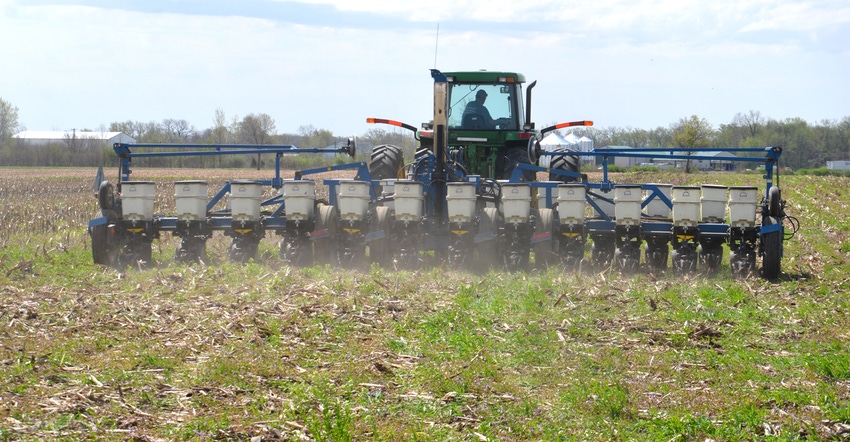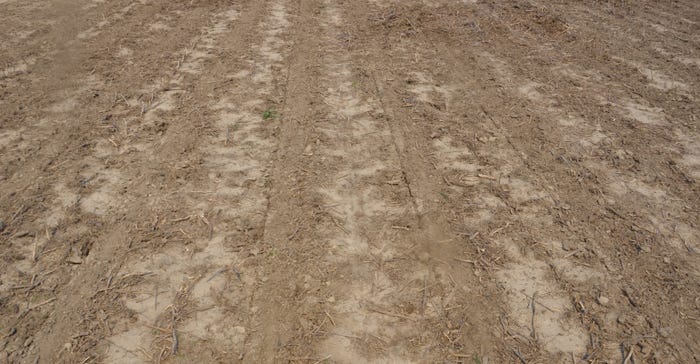
How much glyphosate or glufosinate do you have, or will you get in time to spray? Bill Johnson believes it’s the No. 1 question to ask yourself when you sit down to review weed control strategies for 2022.
“If you won’t get as much as you normally do and not as much as you need, then you need to ask this question each time you are ready to make a herbicide application,” says Johnson, Purdue University Extension weed control specialist.
“Is what you’re about to do the best use of the limited supply you have?” he asks. “Is there another option you could use now, and save the glyphosate or glufosinate for post-applications later?
Keep these questions in mind as you read how Johnson evaluates the two no-till situations presented here:
No-till soybeans after corn. Yes, ask the question, Johnson says. How much glyphosate is available? When surveying the field (shown above) during planting, Johnson sees foxtail and broadleaves, including lambsquarters and pigweed, already emerged.
“You need a burndown here, and I would add residual herbicides with the same pass,” Johnson says. Instead of glyphosate as the burndown, as you might select in a normal year, consider Gramoxone plus metribuzin and 2,4-D as an alternative. You should also add a residual herbicide.
“That would save glyphosate for post-applications on weeds that come through the residual herbicide,” Johnson says.
If these soybeans have the XtendFlex or Enlist traits for herbicide tolerance, then you have more options, he observes. With Enlist and XtendFlex varieties, Liberty, with the active ingredient glufosinate, becomes an option for postemergence use if you have enough of it.

No-till corn after soybeans. Check this picture carefully. “There is nothing green growing here,” Johnson observes. He surmises that either herbicides were sprayed in the fall of 2021 and effectively prevented weeds from germinating, or a burndown was applied well ahead of planting.
If there were weeds present, Johnson says it would again be important to ask yourself if you had enough glyphosate for a burndown, or if you should opt for other burndown options and save glyphosate for postemergence needs.
With no weeds present and assuming a residual wasn’t applied, what could you apply now in this field? Johnson suggests choosing a broad-spectrum preemerge option for corn. Examples are any of the atrazine premixes — Acuron, Armezon Pro, Verdict or Resicore. He would also add atrazine to any products that don’t already contain atrazine.
To prevent any possible crop injury, check labels to make sure the herbicides can be applied after corn spikes.
About the Author(s)
You May Also Like




